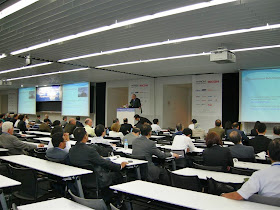Many guest speakers (including Mr. Chris Kirk - CEO of SGS Group; Mrs. Rita Lau - Secretary for Commerce and Economic Development Bureau of HKSAR Gov; Mr. Bruce Hicks - Member of the Strategy Sub-committee of the Council for Sustainable Development of the HKSAR Gov; and Mr. Spence Yeung - ED of SGS Hong Kong) gave speeches related to Testing, Certification, CSR, Green trend, Six Pillar Industries, etc.

Photo taken for memory
Moreover, I met many SGS friends including Dr. Ivan Chan, Ms. Phoebe Lee and Ms. Miranda Kwan, etc.








































.JPG)

.JPG)
.JPG)
+a.JPG)
.JPG)
+a.JPG)
.JPG)
.JPG)



.JPG)
.JPG)











